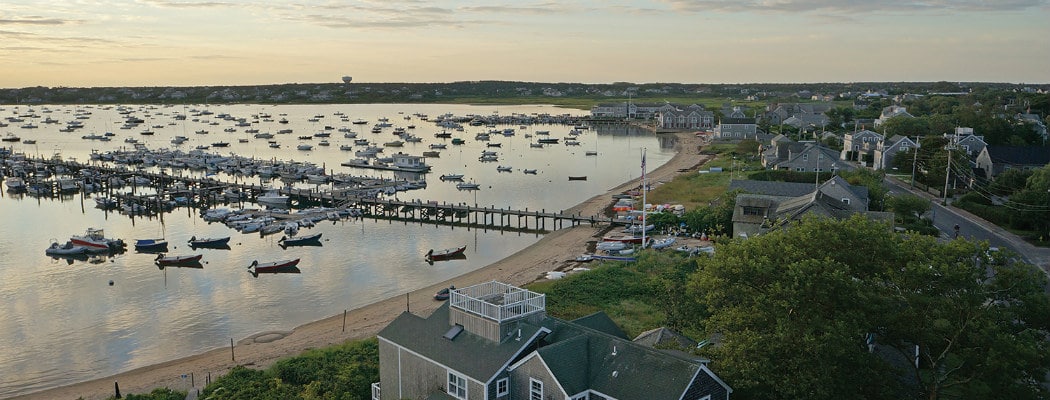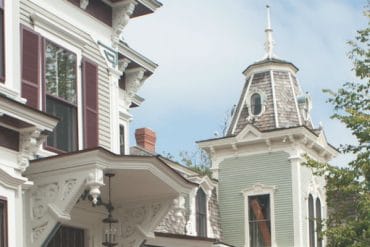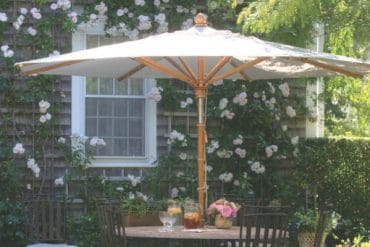The Great Harbor Yacht Club Foundation is setting out to save our harbor.
 Nantucket boasts two of the most vibrant harbors in Massachusetts and one of the few remaining sustainable commercial scallop fisheries in the world. Gazing out onto our pristine waters, it’s hard to imagine there could be anything wrong. However, according to Andrew Mckenna-Foster, the director of Natural Science at the Maria Mitchell Association, Nantucket Harbor is now at a critical moment when the tides could be changing for the worse. Heavy boat traffic, population surges and pollution from fertilizers and septic systems threaten the salt marshes and eelgrass beds that filter water and trap sediment, while algal blooms and rust tide threaten the surrounding waters. Although other initiatives have addressed these threats, a new force has emerged on the front lines.
Nantucket boasts two of the most vibrant harbors in Massachusetts and one of the few remaining sustainable commercial scallop fisheries in the world. Gazing out onto our pristine waters, it’s hard to imagine there could be anything wrong. However, according to Andrew Mckenna-Foster, the director of Natural Science at the Maria Mitchell Association, Nantucket Harbor is now at a critical moment when the tides could be changing for the worse. Heavy boat traffic, population surges and pollution from fertilizers and septic systems threaten the salt marshes and eelgrass beds that filter water and trap sediment, while algal blooms and rust tide threaten the surrounding waters. Although other initiatives have addressed these threats, a new force has emerged on the front lines.
The Great Harbor Yacht Club Foundation has put into motion a $2 million capital campaign to implement and support a comprehensive, scientifically advanced and long-term initiative to restore, protect and preserve Nantucket Harbor. Taking a page from the Nantucket Yacht Club and the Nantucket Golf Club, which have charitable foundations that make educational grants to local students, the Great Harbor Yacht Club established its charitable foundation dedicated to the health of the harbor and its marine ecosystem.

For nearly a decade, the Great Harbor Yacht Club has been making obligatory annual contributions of $35,000 to the Nantucket Land Council to fund research and support existing harbor restoration efforts, including shellfish propagation facilities, water quality monitoring equipment and studies on eelgrass transplant and mooring, shellfish spat migration and the effect of algae on scallop population and eelgrass. “But we could do more,” says Elliot Gewirtz, vice president of the GHYC Foundation. “The harbor is the vitality of the club. On Friday night we gather for drinks by the harbor. We eat oysters from the head of the harbor. We look over the harbor as we dine from our decks. We race our boats in the harbor. Our kids fish in the harbor. In the fall we scallop in the harbor. Without a doubt, we are the direct beneficiaries of a clean and vibrant harbor.”
Helping spearhead the initiative is GHYC Foundation president Ron Zarrella, who emphasizes the importance of extensive research. “Initially we’ve been working with the town on a number of really important projects, and of course, we’d all like to get things done sooner, but before you can do a remediation that will have lasting impact, there is research that needs to be put into place,” he explains. “We can do this in a more substantial fashion than has been done in the past with a world-class panel of research experts. It was Elliot who was able to convince these people to do the work for us.”
On the research front, Gewirtz has enlisted Dr. Robert J. Orth and Dr. William D. DuPaul, both distinguished professors in the biological and marine science departments at the College of William and Mary in Virginia, and Dr. Brian von Herzen, an expert in computer science, electrical engineering and planetary science who lectures on renewable energy, sustainability and carbon recycling at Stanford and Harvard. “We all want a quick fix, but there’s no way around a protracted period of research,” Zarrella says. “Dr. von Herzen is a world-renowned expert on eelgrass propagation who has a proprietary method that he has already implemented in Chesapeake Bay. Planting eel-grass is a marginal approach, but seeding it has a much bigger impact, and there are ways to open up the upper harbor to the seeding process.”

Potential projects rolled out by the GHYC Foundation include expanding and building oyster beds to clean the harbor and mitigate storm surges, propagating eelgrass beds to help the local scallop industry and providing support for the town’s existing shellfish propagation station at Brant Point. The foundation is funded by the voluntary contributions of time, talent and treasure on the part of the GHYC members, as well as the general public.

Beyond the foundation’s scientific brain trust, the GHYC membership itself holds immense promise in making a lasting impact. “By any measure, the membership of the club is exceptional,” Gewirtz says. “We count amongst our members distinguished scientists, inventors, CEOs, entrepreneurs, philanthropists, financiers, professionals and more. As a group, we are people who aspire to make a difference. In addition to our expert panel of scientific consultants, we have a number of people in the club who run big advertising companies, who have successfully run anti-smoking campaigns and other large-scale projects. We have that talent and that kind of capability here. We can run and fund a public interest campaign that will ensure the success of the GHYC clean harbor initiative.”
Call it enlightened self-interest or good citizenship, the GHYC Foundation’s initiative comes at a critical time for the island as a whole and offers promise in heading off further ecological damage.







